Search
Summary 
Loading AI-generated summary based on World History Encyclopedia articles ...
Search Results

Definition
Cyclops (Creature)
A cyclops (meaning 'circle-eyed') is a one-eyed giant first appearing in the mythology of ancient Greece. The Greeks believed that there was an entire race of cyclopes who lived in a faraway land without law and order. Homer, in his Iliad...
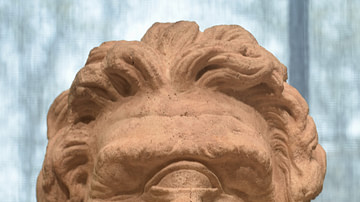
Image
Marble Head of Polyphemus
A marble head of Polyphemus, perhaps part of a large-scale sculptural ensemble depicting the blinding of Polyphemos, similar to a group found in an imperial dining grotto at Sperlonga, south of Rome. Dated to about 150 BCE or later. Polyphemus...
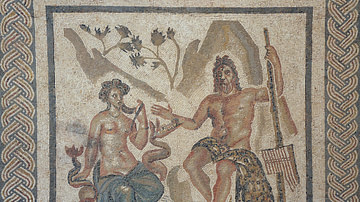
Image
Cyclops Polyphemus & Galatea Mosaic
Mosaic with the Cyclops Polyphemus and the nymph of the sea Galatea, discovered in 1959 during excavation work under the Plaza de la Corredera in Cordoba, Spain. The mosaic dates to the 2nd century CE. Salón de los Mosaicos (Hall of Mosaics...

Image
The blinding of Polyphemus
The blinding of Polyphemus, cast reconstruction of the sculpture group from the villa of Tiberius at Sperlonga (Italy) and dating from the 1st century CE.
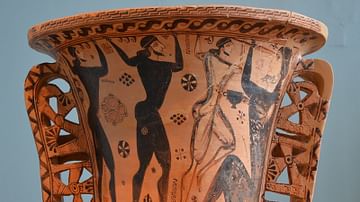
Image
The Blinding of Polyphemus
Funerary Proto-Attic Amphora with a depiction of the blinding of the cyclops Polyphemus by Odysseus and his companions, 670-660 BCE (Eleusis Museum, Greece).
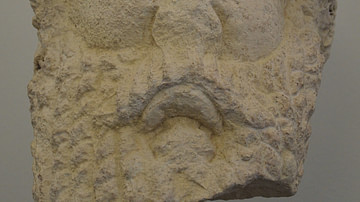
Image
Head of Polyphemus
Head of Polyphemus, a one-eyed Cyclops, from the amphitheatre at Salona, 4th century CE.
Split Archaeological Museum.
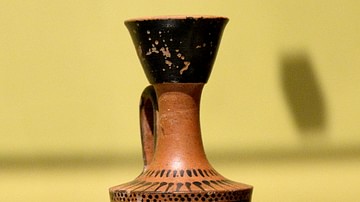
Image
Lekythos, Odysseus & Polyphemus
Oil, especially olive oil, is stored in a specialized Greek pottery; lekythos (pleural, lekythoi). Many lekythoi were found inside tombs; they were used to anointg the dead bodies of single men. Mainly dull red and black paints were used...

Definition
Cyclops (Play)
The satyr-play The Cyclops was written by Euripides, one of the great Greek tragedians, in 412 or 408 BCE. Like many of his fellow tragedians, Euripides centers his play on a well-known story from Greek mythology. The Cyclops is based on...
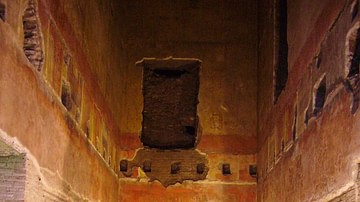
Article
Nero's Golden House (Domus Aurea)
Nero's Golden House (the Domus Aurea) in Rome was a sumptuous palace complex which played host to the wild parties of one of Rome's most notorious emperors. Besides using the finest marble and decoration such as fine wall-painting and gilded...
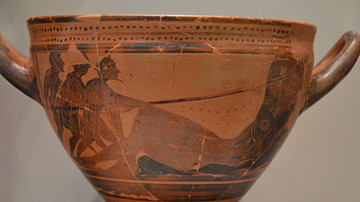
Image
Odysseus blinding the Cyclops
Attic black-figure skyphos depicting Odysseus blinding the sleeping Cyclops Polyphemus, by the Theseus Painter, from Boeotia (Greece), 490-480 BCE. (Altes Museum, Berlin)